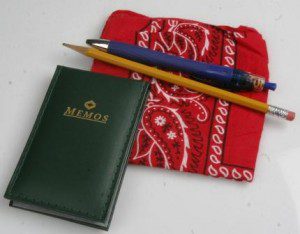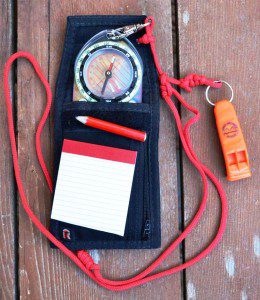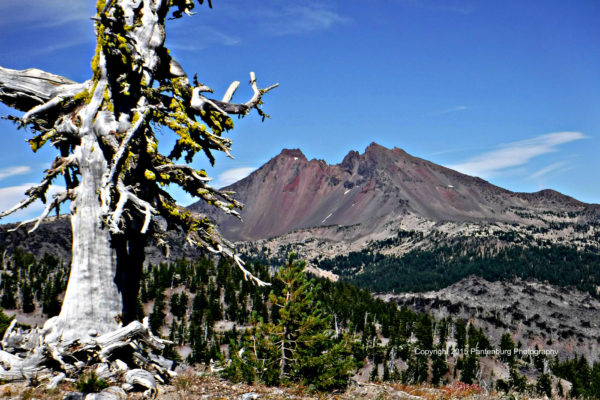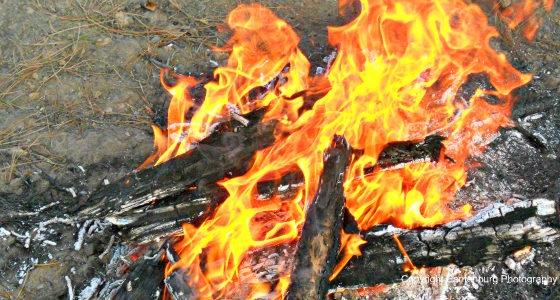Not everyone who dies of hypothermia is in the wilderness. If nobody knows you’ve gone, or where to look, or when you’re expected back, it could be a long wait to be rescued!
by Leon Pantenburg
An old friend of mine mentioned recently that he had gone for a walk at 3:45 a.m. in the Iowa snow and wind. He lives alone, and stays active. But nobody knew he was gone until he returned. Anyone can be vulnerable to slipping and falling on icy sidewalks. A broken hip or injury from falling can immobilize anyone and hypothermia can follow. A detailed note, left behind before any outing, should be a standard procedure. The note could end up being a lifesaver.
Use social media or text message to leave a note. PM or text message someone who is frequently on Facebook, and/or who checks his messages regularly. The nice thing about social media, is you can leave the note to anyone, anywhere. You can choose someone who is likely to be up, or online and they don’t even have to be in the same state.

A memo book could be one of your most important survival tools.
Before writing anything, though, consider who the note will be entrusted to. It must be a reliable person who will contact the proper authorities if you don’t show up as scheduled.
The standard style for an informative news story (which is what this note is) is based on the “Five Ws.” This model is taught in journalism schools, and the name refers to: Who, What, Where, Why and When.
Answer all these questions, and you will give the search and rescue folks a better chance of finding you quickly.
WHO: Start with your name and cell phone number. Also include the names of other people in the party and their cell phone numbers. The phone numbers can be critical: if one cell doesn’t get coverage, another might. Or one phone could be damaged or run out of battery power. All the numbers increase your chances of communication!
Include the make, model, year and license number of the vehicle you’re taking.
WHAT: The purpose of the outing is to do…Fill in the blank, and be specific. A mountaineering expedition to scale a peak differs tremendously from a fishing expedition to the lake at the base. Knowing the purpose of the trip helps narrow down where a lost person might be. It can also help emergency personnel prepare themselves more effectively for the search.
WHERE: I like to use GPS coordinates here. Put the coordinates (and the datum) down of where you intend to park your vehicle, waypoints of your route and your destination. Even if the weather gets nasty and your GPS won’t work, rescuers will have a good idea of where to look. A map left with the “Five Ws” note could be very helpful if you don’t use a GPS!

I always carry a pencil and notebook in my compass setup. (Pantenburg photos)
WHY: An important question, and one that will help rescuers know where to look. A wildflower photography or fishing trek may not cover a lot of ground. Rescuers will know to concentrate their efforts around the WHERE.
A 20-mile jaunt on the Pacific Crest Trail, though, means you’re ambitious, possibly lightly-clad and equipped and probably capable of covering a lot of ground. The search may have to be expanded. WHY also provides a clue as to how prepared the lost persons might be.
WHEN: You anticipate getting back at what time? When should the person with the note contact rescuers? An additional insurance aspect is to take a piece of aluminum foil, step on it with the shoe you will be wearing to leave a footprint. Include the foil with the note. Searchers can then eliminate obviously bigger or smaller footprints with different tread patterns on the trail. Put the note, map and footprint in a gallon ziplock bag. Write the name of the missing person or party on the bag with a felt-tip pen, and hand the package over to rescuers.
Survival common sense is a combination of many small, inter-related skills and techniques. An informative note before leaving on your trek is a good place to start.
Please click here to check out and subscribe to the SurvivalCommonSense.com YouTube channel, and here to subscribe to our email update – thanks!






Leave a Reply